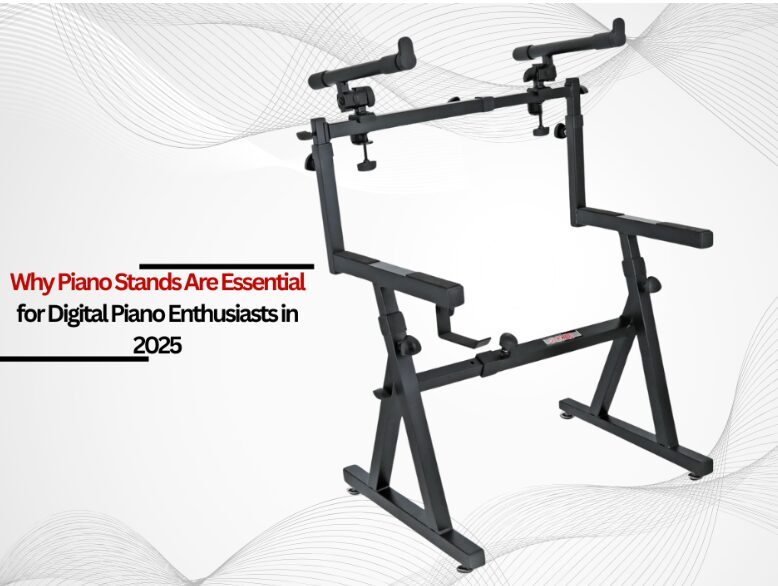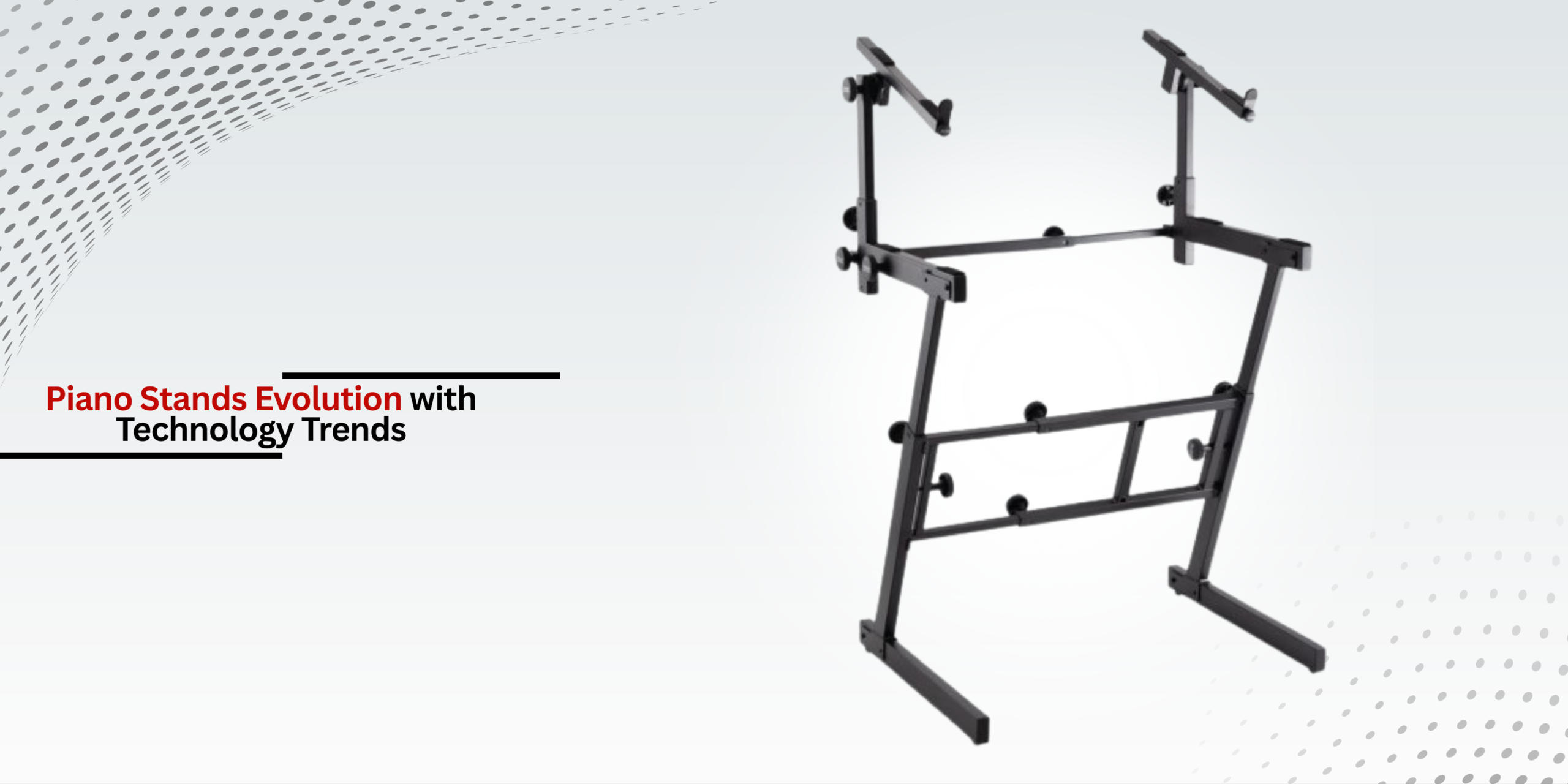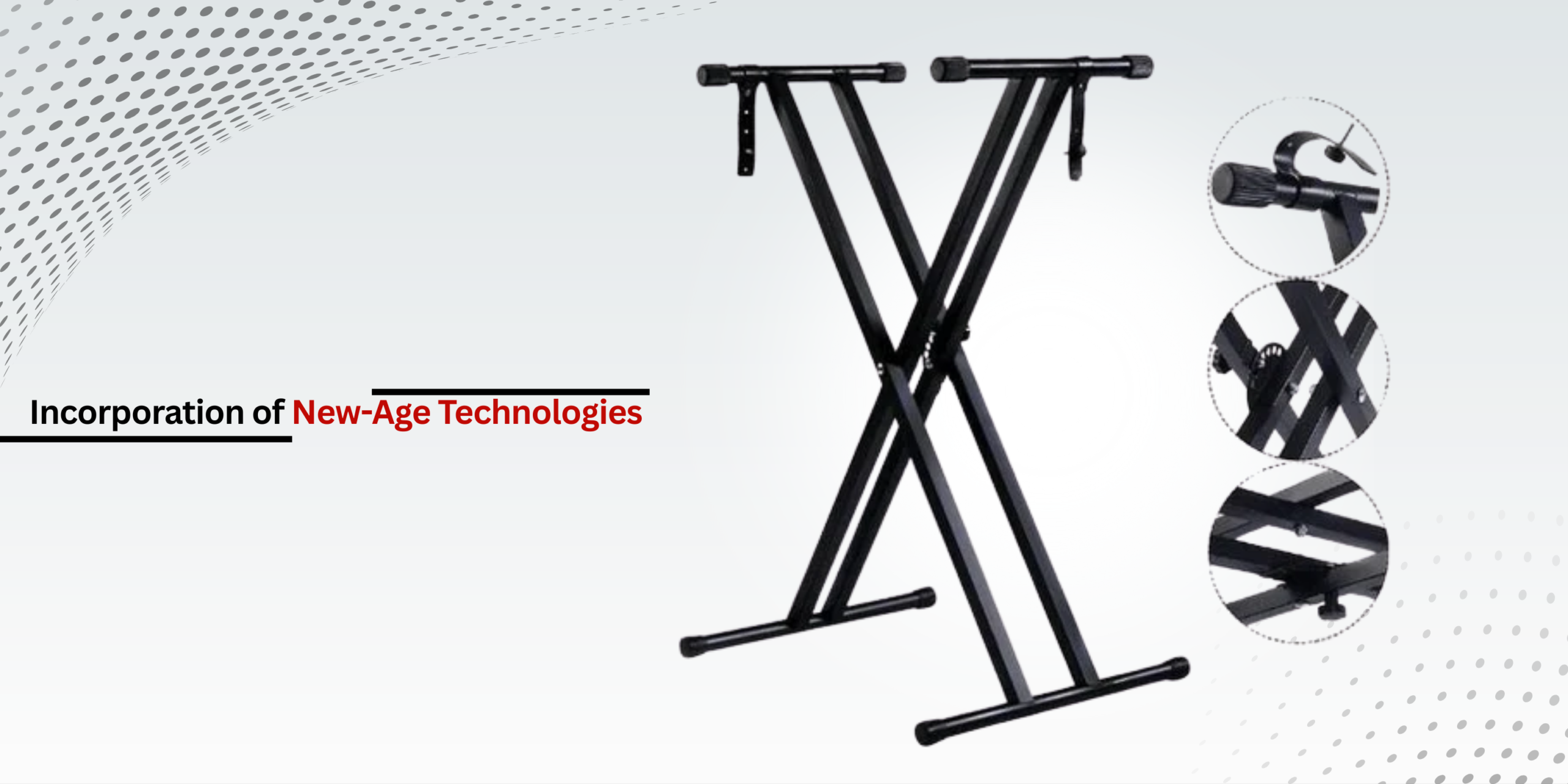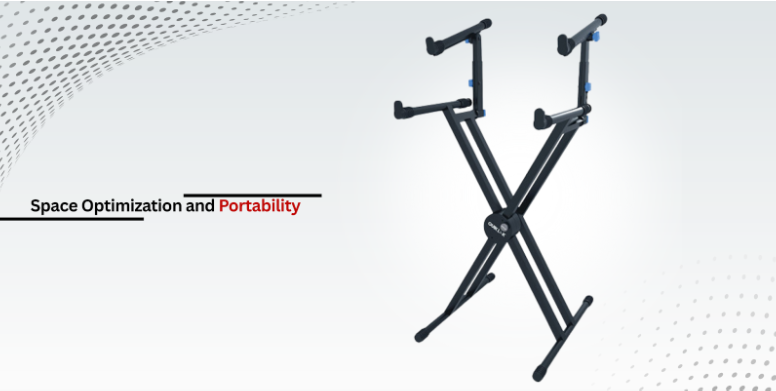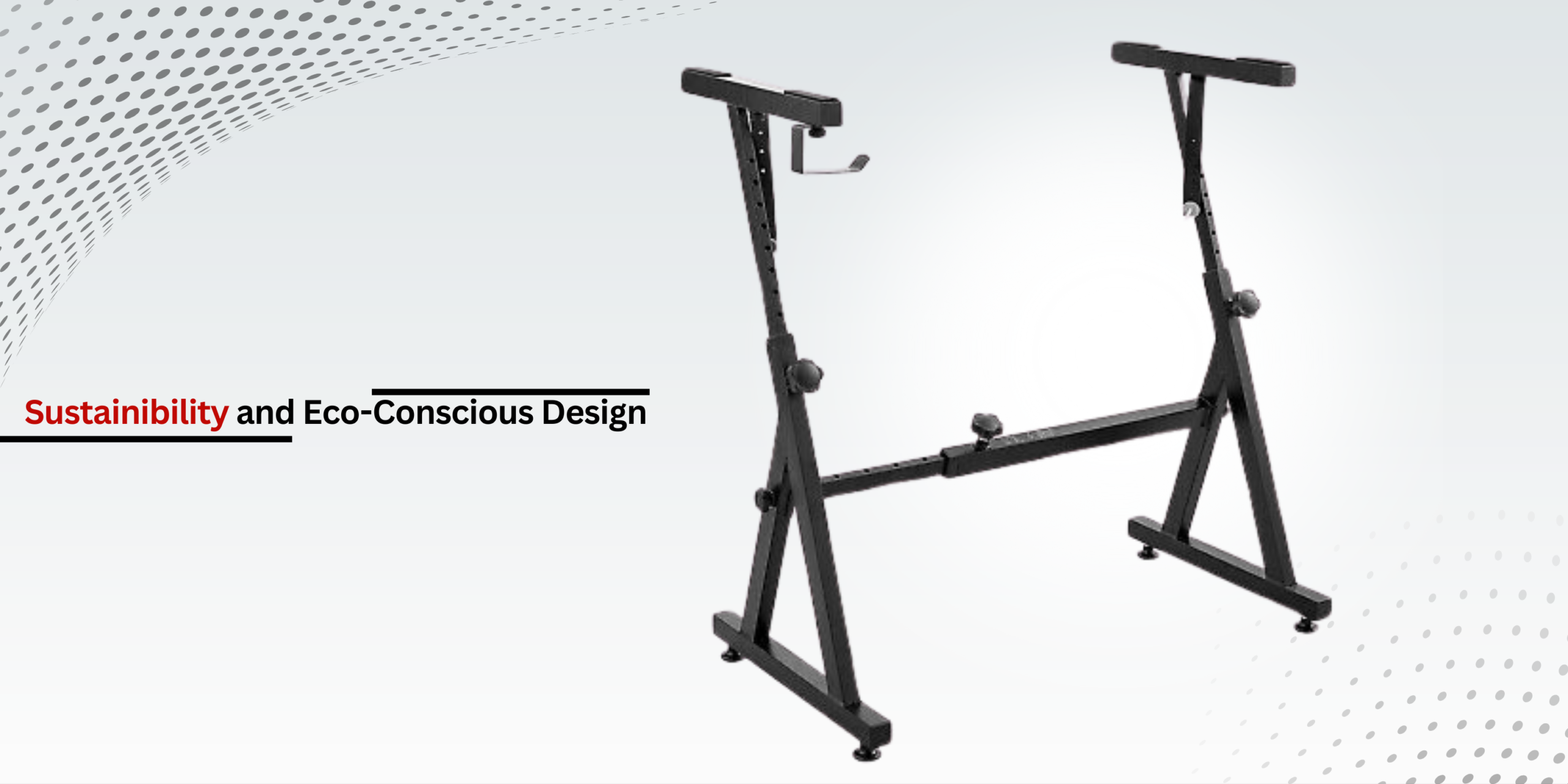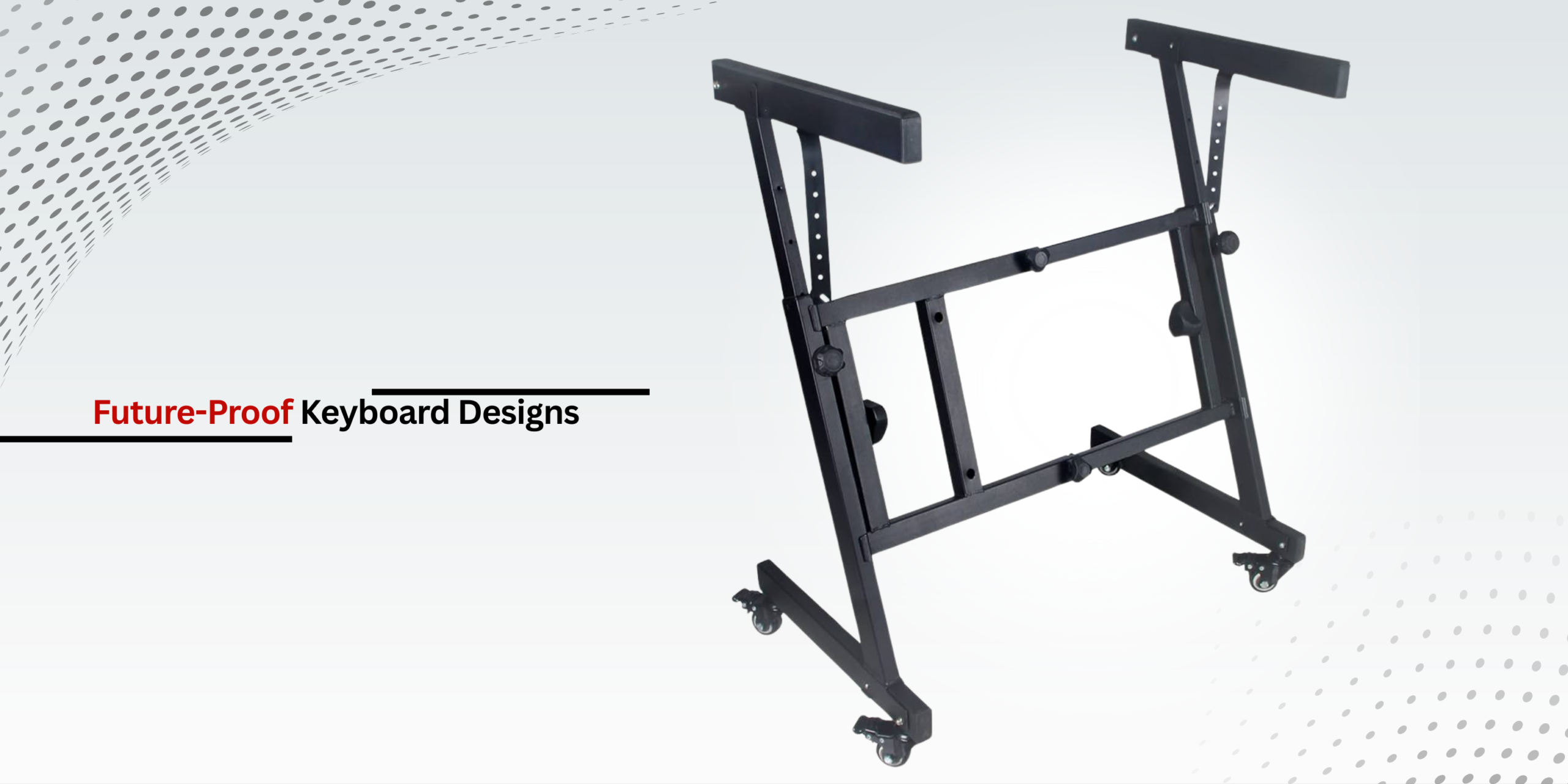In the world of digital music that is constantly evolving, the role of piano stands has changed from basic functionality to importance in modern music systems. With the advancements in technology, digital pianos now come with AI-powered sound modeling, wireless capabilities, and hybrid acoustic-digital features, which increases the importance of the stands in supporting performance, creativity, and health. Stands that optimize the height and angles of keyboards will allow maximum ergonomic positioning. The 2025 vision also includes eco-aware living spaces with compact ergonomic design, immersive workflows, rich content creation, and hybrid working methods. The result enhances the demand for custom-made piano stands that are essential for both aficionados and professionals.
How Piano Stands Evolve with Technology Trends
The development of digital pianos in modern music production has shifted the focus of the design of piano stands to versatility and technology integration. Hybrid setups, including MIDI controllers and tablets, are now configured in multi-tiered modular designs. Elevated frameworks are corrosion-resistant, lightweight, and durable in any environment. Smart homes require effortless creativity, so power sources are embedded, transforming stands into facilitators by eliminating wireless barriers.
Ergonomics Fundamentals
Health-Centric Considerations For Design
Extended practice and performance sessions are known to contribute to muscular strain, especially in relation to posture. Computer-based keyboards, for instance, can be positioned with height-adjustable stands, tilt-able platforms, and split-level configurations in ways that correspond to the natural playing positions of the musician to minimize tiredness and stress injuries. Such considerations are incorporated in works stamped by the designer’s physiotherapists and occupational health specialists, thus guaranteeing useful endurance for users, regardless of skill level.
Flexible Designs for a Broader Spectrum of Users
A user’s specific height, seated posture, and physical needs create a requirement for varying users to be able to customize the pedal stands. Modular add-ons that are custom-made for laptop stand removable, secondary tier synths for lapel mounts, and pedals are tailored to meet changing setups. These features guarantee that the stands can be used within hopping home studio settings or spot-in dynamic live settings.
Incorporation with New-Age Technologies
New Age Advanced Technologies
Contemporary digital pianos are often combined with digital audio workstations (DAWs), cloud-based collaboration software, and virtual instruments. Piano stands with USB-C hubs, wireless charging pads, and cable management systems simplify these workflows and reduce clutter and interference. Further, Bluetooth-enabled communication facilitates the untethering of devices, increasing efficiency in both recording and live settings.
Advanced Smart Sensors
Softer surfaces and motion detection sensors are becoming common in keyboard stands to capture intricate dynamics of playing. Information related to keystroke velocity, pedal usage, and even posture can greatly aid an AI system if synced in real-time or during post-performance analysis. Kinetic and computer vision model frameworks are increasingly common, especially within educational settings where clear insights need to be acted upon.
Space Optimization and Portability
Living Solutions for Bands
The sharp increase in the use of compact musical equipment by urban apartment-based musicians can be attributed to the modern restraints on space. Instruments with legs that fold and detachable components are easy to store. Piano Stand designs that are wall-mounted or ‘floating’ are also popular, allowing keyboards to be stored vertically or sunk into furniture when not in use.
Portability for Mobile Musicians
For educational and performance purposes, carbon fiber and aluminum serve as the lightest “aerospace grade” materials to be used, making them ideal for both portable and mobile structures. Such structures can be rapidly dismantled at different locations, which require quick-setup carrying cases and stands with quick-release mechanisms. In addition, stands with shock-absorbent joints and non-slip bases are less likely to tip over on outdoor and uneven surfaces.
Sustainibility and Eco-Conscious Design
Renewable and Recycled Materials
Sustainable practices have shifted the stand construction to utilize metals, polymers, and wood that are biodegradable, recycled, or vertsioned to eco-friendly sources. Advanced technologies like 3D printing and laser cutting are being employed to minimize material waste even further. A number of brands have started focusing on carbon-neutral production, neutralizing emissions by collaborating with reforestation programs to restore forests.
Circular Economy Practices
Products that have longer life cycles and require less frequent replacing are achieved through modular construction with replaceable components. Transitioning to trade-in schemes and subscription-based upgrades is becoming the norm as a way to lessen e-waste in alignment with circular economy principles. Such initiatives are driven by the growing demand for ethically made durable accessories.
Future-Proof Musical Setups
AI-Driven Customization
User preferences related to height and accessory configuration are custom tailored using advanced machine learning techniques. AI-enabled music stands have personalized auto-adjust settings that adapt based on a musician’s historical data, tailoring arrangements to suit their changing requirements. This technology is helpful in shared studio spaces where different users need different ergonomic profiles.
Compatibility with Augmented Reality (AR)
Stands are being made to serve as anchors for virtual elements as AR interfaces are being incorporated into mainstream musical production. Haptic feedback technologies recreate the feel of an acoustic piano, and integrated cameras as well as sensors track motion of body parts to create avatars that can be interacted with in mixed reality performances. These technologies aid in a smooth transition from traditional playing techniques to advanced workflows.
Conclusion
Piano stands are no longer supplementary accessories in 2025; they are integral parts of a pianist’s digital interface. Companies 5 Core, Roland, K&M, Chromecast, and On Stage have shown the evolution of these supports, leading the innovation in ergonomic precision, technology, and eco-friendly architecture. These stands are celebrated for their contribution to the bridging of old musicianship and new workflows on digital ecosystems. They focus on the health of the user and make an effort for environmental protection. Fundamental in the ever-changing world of music production, piano stands are discreetly essential in fostering creativity and versatility in amateurs and professionals.

